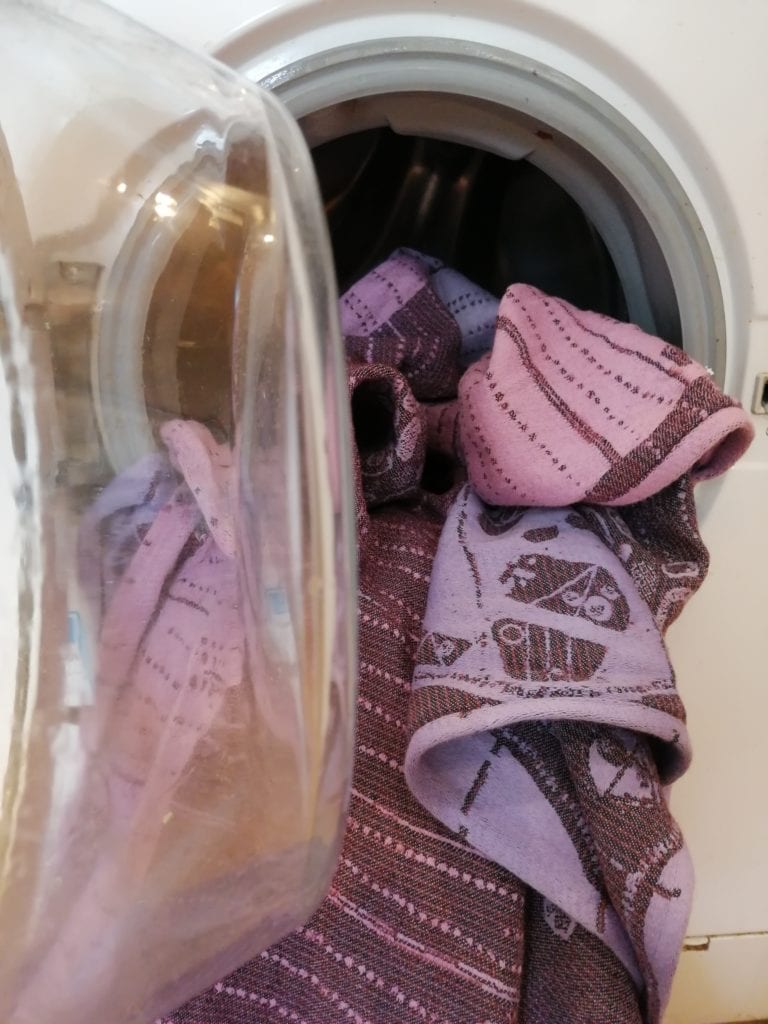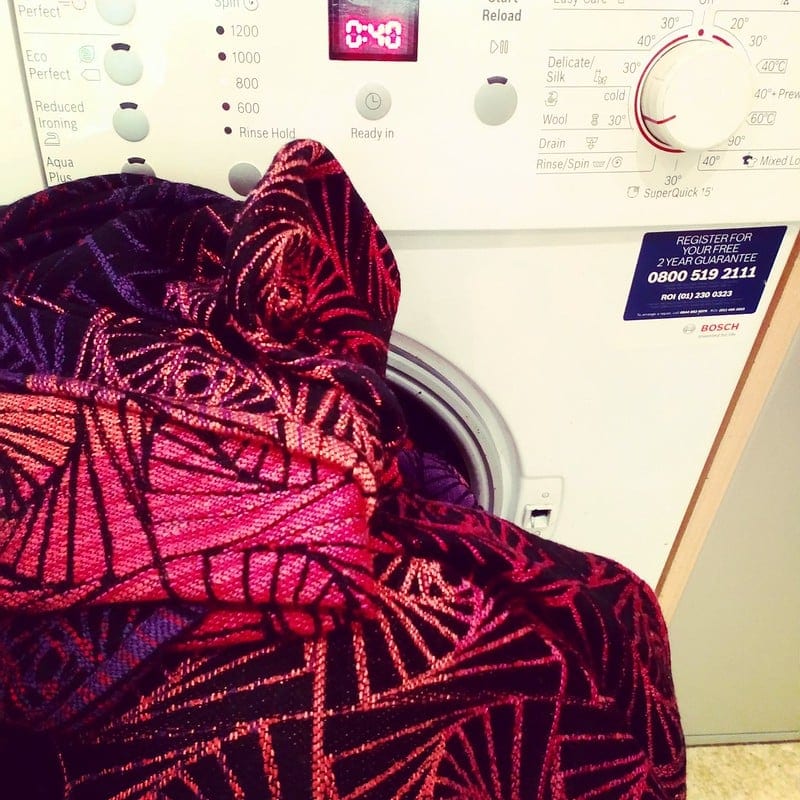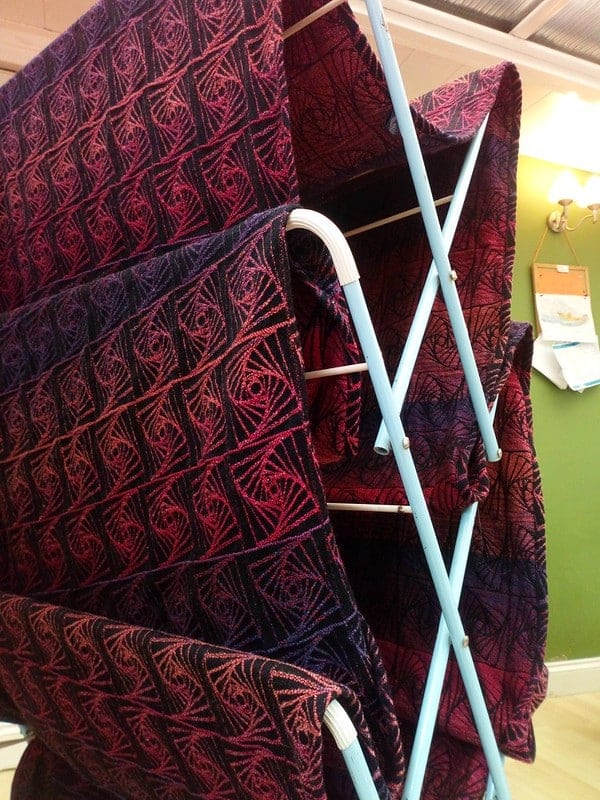Understanding and Caring for Wraps
Wool Blend Woven Wrap Washing Instructions: Easy Steps to Avoid Felting
Most wraps can be washed following our general washing instructions, but wool wraps need a little extra consideration to avoid felting.
Felting is a term that describes a physical change in wool, where the fibres shrink and lock together. This alters the look and feel of the cloth, and changes the wrapping properties, sometimes to the point where a wrap will no longer function as intended.
Our wool washing guide limits the factors that can cause felting, helping to prevent it. Many of our wool wefts are blended with cotton to help stabilise the yarn, and the wool is always woven onto an organic combed cotton warp.
Before You Wash Your Wrap
It is worth knowing that the wool yarn in your loomstate wrap has been treated with naturally occurring processing oils, to protect the weft during weaving. These coat the wool fibres, keeping them smoothed down and reducing friction to allow them to be tightly woven in.
After weaving, these oils have served their purpose and need to be washed out. They are also the most common cause of the itchy feel or slight sensitivity that some people experience with wool. The merino fibres are naturally hypoallergenic, whereas lanolin oil can be an irritant.
It can require several washes to take a wrap out of loomstate and get the wool weft feeling how it is supposed to. The change between loomstate and the wool’s natural state can seem quite dramatic, especially as the fibres start to fluff up. It is easy to be misled by this, and worry that this state change is felting, when it is actually quite normal! Once washed fully, your wool weft should be thicker, soft and fluffy. The threads should be raised and seem larger than they were, with visible wool fibres sticking out of the once tightly plied yarn to create a slight haze of fibres on the surface of the cloth. The threads might be touching each other and less clearly defined. The width of the cloth will also become uniformly narrower than it was. None of this is ‘felting’.
How to Wash Your Wool Wrap
- Use a wool specific or hand wash cycle on your washing machine. Rapid temperature increases and agitation (rubbing) of the cloth when wet can cause the scales of the fibre to expand and interlock. A wool cycle on your washing machine will be designed to limit these factors. Some wool cycles will have a relatively high spin cycle, but they will be programmed to increase speed in a safe way.
- Put your wrap in it’s delicates laundry bag during washing in a regular load of washing.
- Use a wool specific detergent. Wool is naturally more stable in acidic or neutral conditions, and some regular detergents can be too alkaline.
- Don’t wash your wrap with other non-wool items.
- Dry away from direct heat. This means not to tumble dry or hang over a radiator. You are fine to hang your wrap on the washing line, using far more pegs than you usually would. You can also tent your wrap over a drying maiden or some dining chairs. It doesn’t need to be spread out completely flat or re-shaped the way a wool sweater would, just evenly supported.
- Iron on a cool setting.
Some people choose to handwash their wool wraps, and that is fine to do, especially if your washing machine doesn’t have a wool specific cycle. It is important to remember that you can still felt a wrap by handwashing if you create the right conditions for felting, so it is only an option that we recommend if your washing machine doesn’t have a suitable cycle programmed in.
The infographic below shows how to handwash using a no-rinse wool wash (not every wool wash will fit this bill so check your bottle), but our recommended instructions are to wash in a washing machine where possible rather than to handwash.
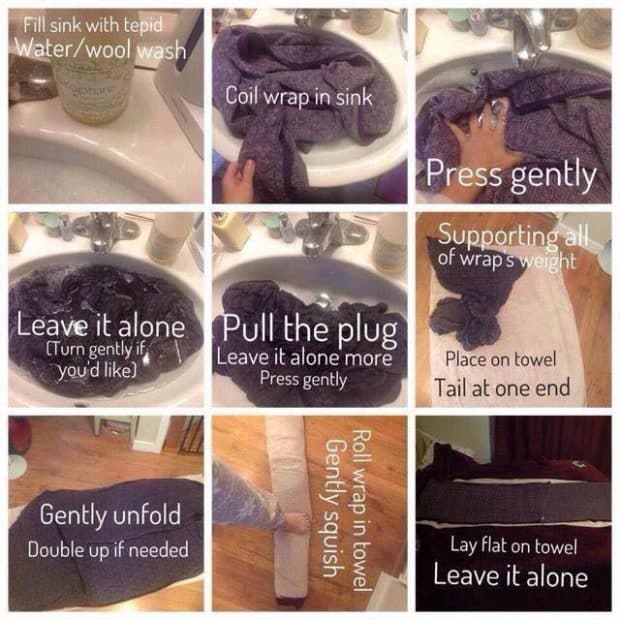
The only examples that we have seen of our wool wraps felting have been in instances where the wraps have been accidentally, incorrectly washed and once due to a faulty washing machine. A couple of those incidences have been due to users being so anxious and mistrustful of our washing instructions that they have made adaptations to the process in an attempt to make it feel ‘safer’, but those extra steps have actually done more harm than good!
Here is a guest blog from one of our North American customers, about her experiences washing our 25% merino wool wraps in a typical US washing machine to show that it can be done safely!
What is Felting?
Felting is a state change that occurs in wool, where the scales that make up the wool fibres lock together. Completely felted wool has different properties to non-felted wool, and even though out cloth has a cotton warp (so cannot fully felt,) that can make a felted wrap impossible to use.
Felted wraps become dense and solid, losing definition so that it is hard to distinguish one wool thread from another. They shrink up, losing width unevenly to create puckered, wobbly looking rails. The cloth loses its ability to stretch, creaking slightly as you apply tension.
The key point to consider is whether you feel that your wrap still functions safely, effectively and comfortably. It is perfectly normal for wool to become softly fluffy and appear more ‘woolly’ after washing. This is not to be confused with felting.
If your wrap still has enough diagonal stretch, width and flexibility to use safely and comfortably, then it is fine to use. Our general advice is if you aren’t sure whether a wrap has felted, then it probably hasn’t, because when a wrap has become unusably felted you know straight away!
Following our washing instructions will prevent your wrap from felting. Felting doesn’t happen randomly, it is caused by a particular set of circumstances and when you understand what those are then avoiding it becomes much simpler. Moisture, agitation, increased alkalinity and quick changes in temperature/high temperature open up the scales of the fibres and encourages them to lock together. Felting is more likely to occur when several of these conditions are met. So washing at high temperatures or a quick change of water temperature will encourage felting. The friction of the wrap rubbing against something will be more likely to encourage felting if the wrap is wet. There is evidence to suggest that spinning at high speeds doesn’t cause felting in itself because at high speed the cloth is pinned to the sides of the drum and not being rubbed against itself.The damage is likely to be due to the agitation created during the process of building up speed when the cloth is moving considerably.
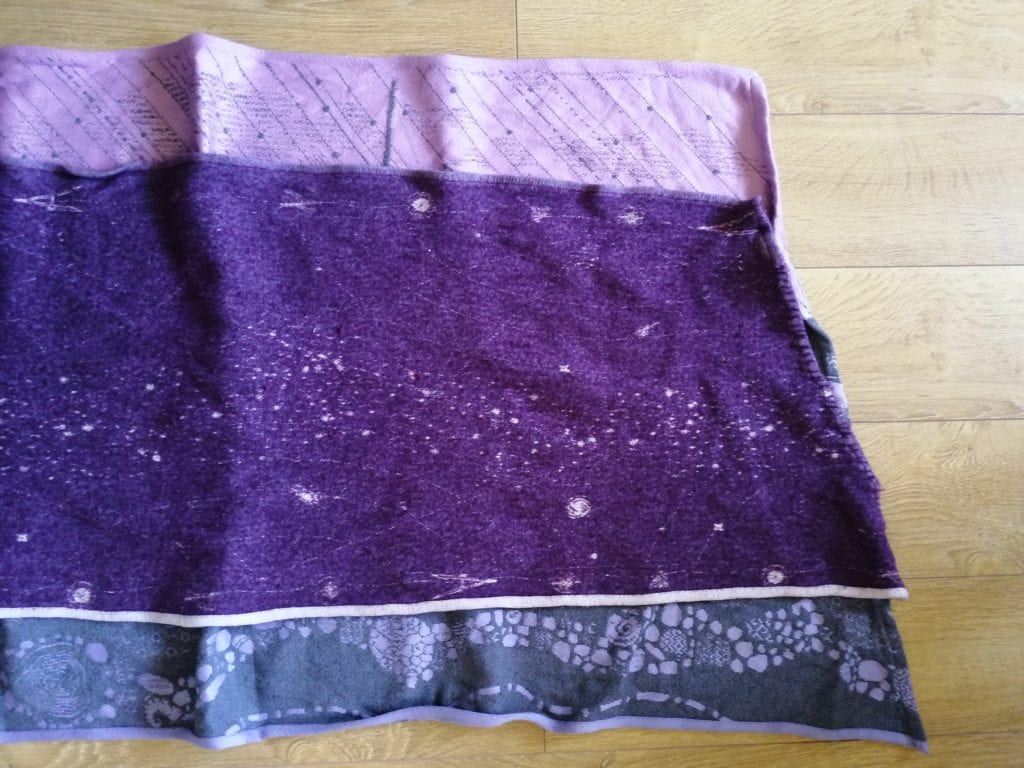

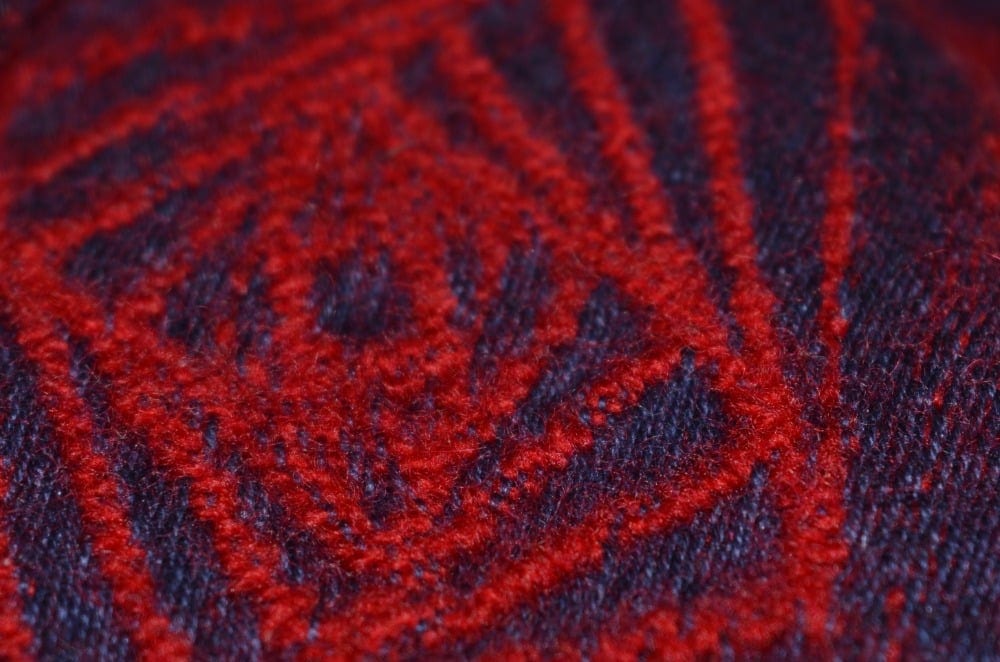
Felted threads 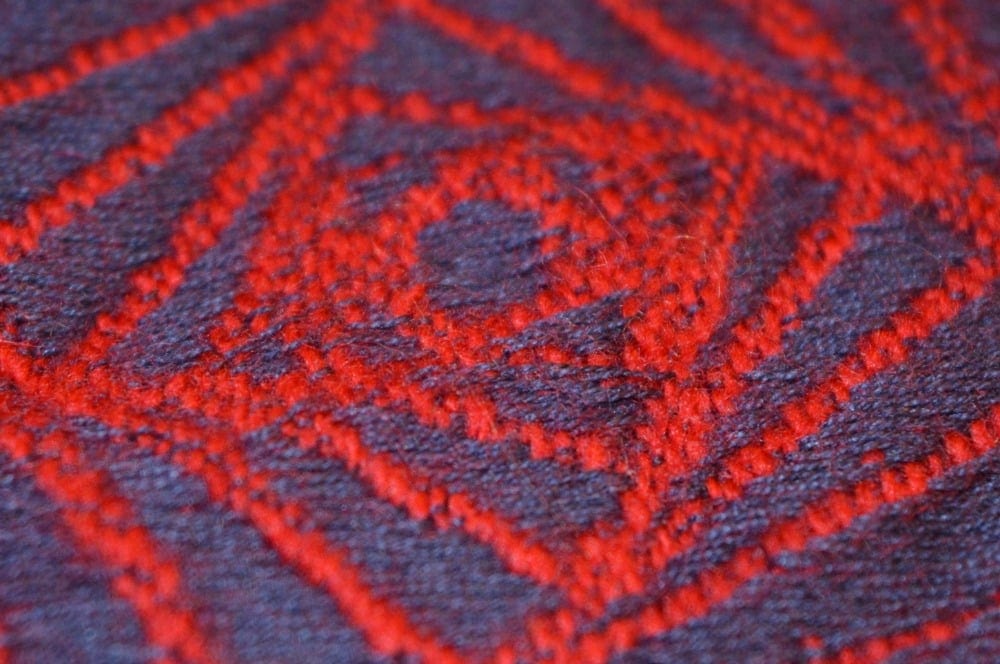
Unfelted threads 
felted wool fibres have separated from the cotton and pilled on the surface 
Felted wool fibres have collected on the surface of the white warp. 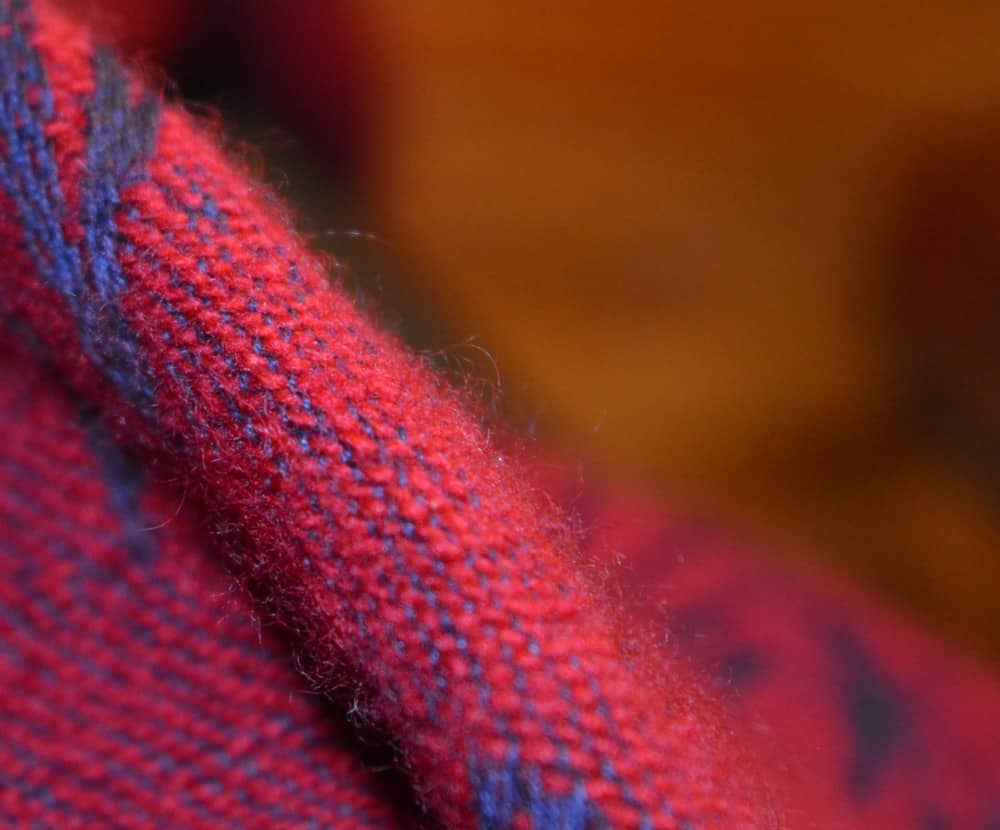
Non-felted wraps can look very fluffy, but this is perfectly normal!
